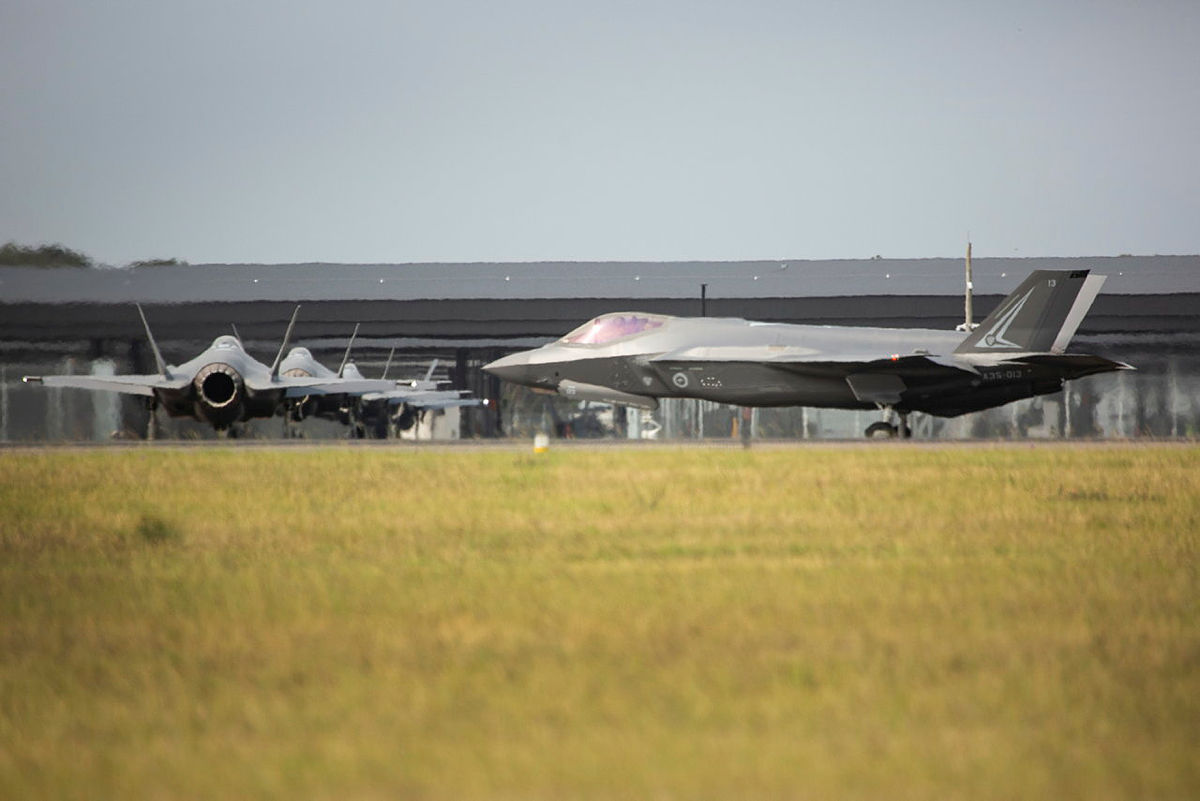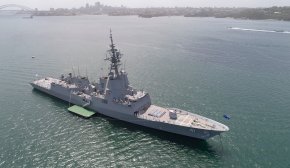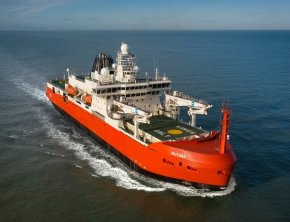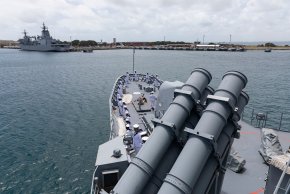Royal Australian Navy Discussions and Updates
- Thread starter icelord
- Start date
- Status
- Not open for further replies.
Well I do care and ships are judged by their appearance.
Ships don’t need to spend months alongside to maintain their uppers.
Granted ships companies are smaller but what do you think the Chief Bosun's Mate’s (Buffer)job description is?
He’s there to ensure seamanship evolutions are professional and safe as directed by the Jimmy (XO) but he’s also responsible for the outward appearance of the ship, nothing more and nothing less.
How your ship presents is a reflection on how a “working navy” functions, it’s called pride!
I can see that this is becoming a bit a 'Vegemite' discussion (you'll either love it or hate it !)
However, I picked this up today & it is a 'sore' point for many...
Your Presence Mission is not Sending the Message You Think it is
Looking at T45, the RN has followed the 'trailing edge' mantra since the 1970's, as they always had fwd & aft 'funnels' / air intakes ( as aft is predominately main engine exhaust, with fwd being emergency diesel / HVAC Air intake). With tall masts, sailing around means that sea spray / dirt /detritus from the atmosphere coats the surfaces & generally gets 'washed to the aft face, so painting black helps to hide some of this. T45's have been prone to some 'streaking' down the foremast, as there's a flat surface, with a lip, just below the radar at the top of the mast, but the image is obviously a view of the ship out the way out of Portsmouth, not on the way back from a deployment...UK has some interesting paint jobs.
View attachment 47817
I guess the question comes down to how much do you paint it black, and then won't it stand out and look very odd. Here on the UK Destroyers, they seem to only paint the trailing surface.
I would also assume the black paint would likely absorb more sun light energy. Maybe it can't be painted black?
Maybe black on the tail surface, dark grey at the sides, light grey at the front would be a compromise. I think that could look quite neat.
Also how big our Hull numbers? Were they always so comparatively massive.
I do like the look of the upgrade Anzacs. For a comparatively small ship, they look a lot beefier now. With their massive hot rodded radar, harpoons out the front and the new 5".
I wonder if its worth redesigning the funnels, the ovaloid curved pipes can't be good for radar signature, and I would assume something could be done in terms of flow.
You mention the black paint being a heat absorber. Masts are generally full of smaller compartments with lots of equipment associated to Comms & Radars. It usually means a great design demand of getting power supplies & aircon (HVAC)/chilled water up there, as the kit generates a lot of heat in it's own right, but being small spaces, up in the airflow, they do get warm in summer & freezing cold in winter.
SA
Takao
The Bunker Group
Painting mast and electrics black is a good thing - because it absorbs heat. The high absorption factor makes black the best colour for transferring heat; meaning that a widget painted black and exposed to airflow will be cooler than painting the box any other colour. It seems counter-intuitive - but it's why Lockheed accepted the additional weight for black paint on the U-2. Painting everything above the funnel black will make the ship's innards cooler (all things being equal).You mention the black paint being a heat absorber. Masts are generally full of smaller compartments with lots of equipment associated to Comms & Radars. It usually means a great design demand of getting power supplies & aircon (HVAC)/chilled water up there, as the kit generates a lot of heat in it's own right, but being small spaces, up in the airflow, they do get warm in summer & freezing cold in winter.
I believe that only works with items that you expect to radiate more heat than they will collect from sunlight. So for example a heatsink or exhaust stack painted black will emit more thermal radiation in the IR range than a lighter coloured object.Painting mast and electrics black is a good thing - because it absorbs heat. The high absorption factor makes black the best colour for transferring heat; meaning that a widget painted black and exposed to airflow will be cooler than painting the box any other colour. It seems counter-intuitive - but it's why Lockheed accepted the additional weight for black paint on the U-2. Painting everything above the funnel black will make the ship's innards cooler (all things being equal).
Why is black the best emitter?
Why are emitters colored black better emitters than other colors? Why is white a worse emitter?
So a black radar dish may emit more energy than a light coloured one, particularly at night.
But a black radar mast may absorb more energy during the day than a storm grey/ship grey/haze grey one.
Darker coloured ships may be hotter during the day, and colder at night than a light coloured one.
I imagine the anzac radar mast gets a lot of sunlight both directly and reflected. Plus surrounded in swirling exhausts. Probably already tight due to top weight demands. Perhaps one of the reasons not to paint it.
walter
Active Member
After arriving in the Netherlands at the end of August, the Australian icebreaker RSV Nuyina starts her trial in the North Sea.This marks the beginning of a one-month phase and an important milestone for all those involved in the icebreaker project; Australian Antarctic Division, ship managers Serco and shipbuilder Damen.
Damen has been working on the icebreaker since 2016. After the trial, weeks of deep water trials will follow. Testing of the ship's speed, sound, propulsion systems, control systems, advanced electrical systems and scientific equipment will take place as the ship prepares for the latest sea ice tests in the Arctic early next year.
RSV Nuyina, one of the most advanced ships of its kind, will provide a world-class scientific platform for Antarctic researchers, with advanced equipment to study the depths of the Southern Ocean, sea ice and the upper atmosphere. The ship is expected to arrive in its home port of Hobart in mid-2021 to begin Antarctic operations in next year's southern hemisphere summer season.
Bron: Damen Schelde Naval Shipbuilding
Damen has been working on the icebreaker since 2016. After the trial, weeks of deep water trials will follow. Testing of the ship's speed, sound, propulsion systems, control systems, advanced electrical systems and scientific equipment will take place as the ship prepares for the latest sea ice tests in the Arctic early next year.
RSV Nuyina, one of the most advanced ships of its kind, will provide a world-class scientific platform for Antarctic researchers, with advanced equipment to study the depths of the Southern Ocean, sea ice and the upper atmosphere. The ship is expected to arrive in its home port of Hobart in mid-2021 to begin Antarctic operations in next year's southern hemisphere summer season.
Bron: Damen Schelde Naval Shipbuilding
Attachments
-
100 KB Views: 32
Caption's a bit wrong, I think. Should be Ōnami (おおなみ ) not Omani. Not your fault - the ADF got it wrong.Meanwhile, in the working Navy....
"JDS Omani in formation on the left of INS Shakti with HMAS Ballarat on the right while conducting a Replenishment at Sea in the Indian Ocean during Exercise MALABAR 2020." (Source : ADF Image Library - link)
View attachment 47806
Redlands18
Well-Known Member
An investiture ceremony was held in Canberra today Tuesday for Teddy Sheeans VC.
Last edited:
The current HMAS Armidale laid wreaths at the site of the action as the Last Post was paid in Canberra.An investiture ceremony was held in Canberra today Tuesday for Teddy Sheeans VC.
Very well done
oldsig
MARKMILES77
Well-Known Member
ASPI have just released this article which is of relevance to the question of whether ADF bases are secure:And your problem is? I believe that @Todjaeger actually makes very valid points. And @vonnoobie adds to them. No matter where the RAN vessels are based the PLAN can loft explosive bricks at them from at least 100 nm, so your argument is rather pointless in this day and age, unless you plan on basing the fleet alongside at Alice Springs.

Hardened bases needed for ADF’s new hardware | The Strategist
The force that Australia’s defence organisation is building will be the most powerful and capable that the nation has ever fielded. The Australian Defence Force’s massive build-up will include the acquisition of a host of ...
The author raises some good points and I agree that more thought should be given to strengthening defensive measures for bases. However, aside from the idea of parking subs in hardened pens, I don't see any idea on how to protect surface units. You're talking a very big concrete structure to hide an LHD !ASPI have just released this article which is of relevance to the question of whether ADF bases are secure:

Hardened bases needed for ADF’s new hardware | The Strategist
The force that Australia’s defence organisation is building will be the most powerful and capable that the nation has ever fielded. The Australian Defence Force’s massive build-up will include the acquisition of a host of ...www.aspistrategist.org.au
Boagrius
Well-Known Member
I also think it's pretty on point. Personally I'd like to see the hardening process begin with RAAF Darwin, Tindal & Curtin - shifting vital assets like aircraft, fuel, ammunition etc into hardened shelters if not underground.
Geography buys us time here (if we choose to capitalise on it) in that only a limited number of important sites - like those above - are currently within reach of the PRC for now (DF-26 from Hainan & CJ-20 from H-6). Given the investment in IAMD announced in this year's strategic update, it ought to be possible to cover these sites with decent GBAD (mainly BMD and C-LACM... maybe Patriot/THAAD) starting later this decade.
AFAIK the PLAN would be relying on SSNs to target either the east or west coast by surprise, and they are far from abundant for now, so I imagine we'd have a little more time before the need to harden those assets becomes as urgent.
Geography buys us time here (if we choose to capitalise on it) in that only a limited number of important sites - like those above - are currently within reach of the PRC for now (DF-26 from Hainan & CJ-20 from H-6). Given the investment in IAMD announced in this year's strategic update, it ought to be possible to cover these sites with decent GBAD (mainly BMD and C-LACM... maybe Patriot/THAAD) starting later this decade.
AFAIK the PLAN would be relying on SSNs to target either the east or west coast by surprise, and they are far from abundant for now, so I imagine we'd have a little more time before the need to harden those assets becomes as urgent.
Last edited:
That’s a great pic, thanks for posting it.HMAS Brisbane (and 2 small interlopers) in Sydney harbour hosting the FC handover. (Image source : ADF Image Library link)
View attachment 47818
I notice however that the harpoon launchers are absent. Is that normal now, or are they easily fitted and removed?
Hollowed out cliffs are the usual method, though whether we have any geography that allows for that / is in any way suitable as a hardened / affordable / supportable naval base, is a completely different story...The author raises some good points and I agree that more thought should be given to strengthening defensive measures for bases. However, aside from the idea of parking subs in hardened pens, I don't see any idea on how to protect surface units. You're talking a very big concrete structure to hide an LHD !
Yes, about half a day’s work from memory. The cradles, wiring etc are permanently installed. You just crane the tubes containing the missiles onboard and lock them down.That’s a great pic, thanks for posting it.
I notice however that the harpoon launchers are absent. Is that normal now, or are they easily fitted and removed?
No we don't. And even if we did, good luck finding any government willing to stump up the billions it would cost to build and maintain. So in the meantime the RAN will continue to rely on force protection and it's associated support systems.Hollowed out cliffs are the usual method, though whether we have any geography that allows for that / is in any way suitable as a hardened / affordable / supportable naval base, is a completely different story...
Hollowed out cliffs are the usual method, though whether we have any geography that allows for that / is in any way suitable as a hardened / affordable / supportable naval base, is a completely different story...
We have plenty of cliffs, especially in the South Island's west coast under literally mountains of some of the worlds hardest granite. You could blast caverns big enough to hold the whole of the RAN fleet. But like DDG says what government would want to pay for it.No we don't. And even if we did, good luck finding any government willing to stump up the billions it would cost to build and maintain. So in the meantime the RAN will continue to rely on force protection and it's associated support systems.
- Status
- Not open for further replies.



